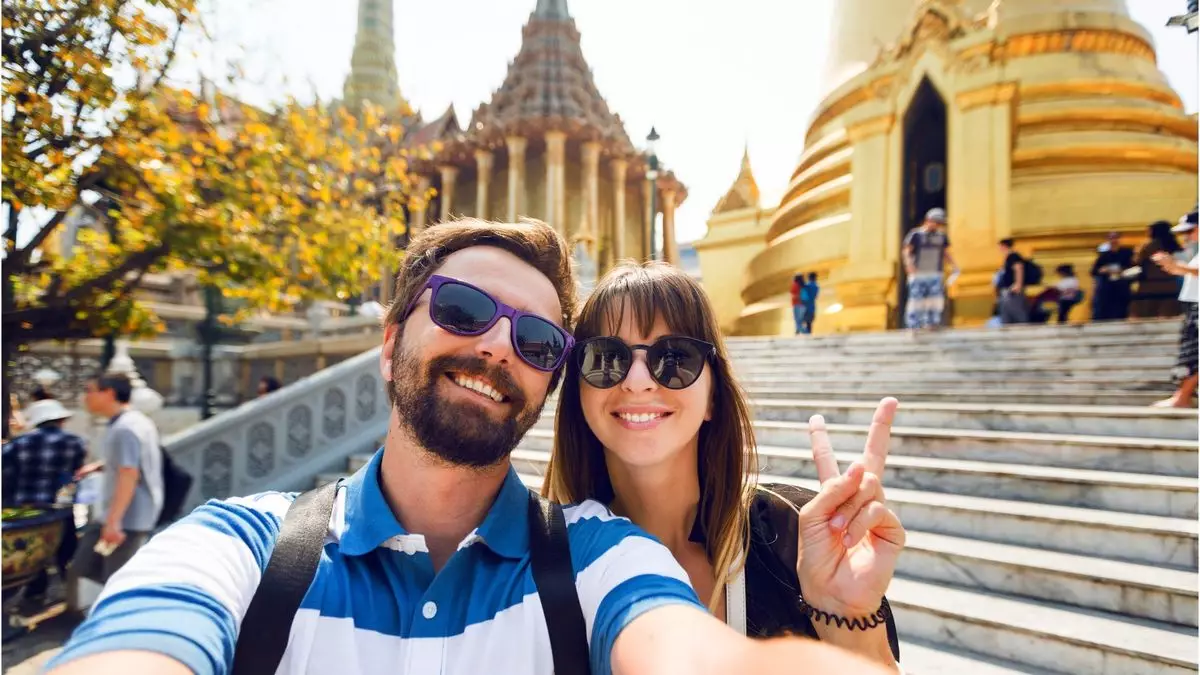Angkor Wat, a magnificent 12th-century temple complex situated in Cambodia, stands as an emblem of both architectural grandeur and cultural heritage. Recognized as a UNESCO World Heritage Site, this expansive religious monument attracts visitors from around the globe, particularly during the breathtaking sunrise at its flagship temple. Yet as the world emerges from the shadows of the pandemic, the tourism dynamics surrounding Angkor Wat are changing, presenting a mixed bag of opportunities and challenges.
The COVID-19 pandemic significantly disturbed global travel patterns, and Angkor Wat has not been immune to its consequences. According to Sarah-Leigh Shenton, the marketing director at Red Savannah, current ticket sales for Angkor Wat have plateaued at just 45% of pre-COVID figures. A substantial factor for this downturn is the absence of traditional tourists from China, whose travel habits have historically played a pivotal role in shaping the site’s visitor demographics.
Though travel in Asia is rebounding slowly, certain countries, such as China, Japan, and South Korea, face distinct hurdles. The economic ramifications of the pandemic, coupled with fluctuating currency values, have rendered international travel a considerable expense for many in these regions. Consequently, potential tourists from these countries are opting to explore more local destinations, rather than embarking on international journeys to iconic sites like Angkor Wat.
Data from DidaTravel, a notable travel distributor based in Shenzhen, China, reveals that travel intentions among Chinese tourists are shifting. The organization’s spokesperson noted a remarkable increase in bookings to Japan from China, suggesting a renewed interest within Asia. Yet, the stark reality is that Japan is witnessing slow recovery patterns attributable to the devaluation of the Japanese yen, which has made it increasingly costly for locals to travel abroad.
As these dynamics unfold, domestic travel remains the preferred and more feasible option for many Asians. Companies like China Youth Travel Service have observed that while travel among Asian countries is picking up, much of it is strategically focused on shorter, regional excursions rather than long-haul commitments abroad. This newfound emphasis on localized travel reflects a pragmatic response to economic pressures, demonstrating how global events can reshape tourism trends in real-time.
In stark contrast to the hesitancy felt among Asian travelers, there’s a marked increase in Western visitors exploring Southeast Asia, particularly in 2024. Tour operators report that countries like Japan, Vietnam, Cambodia, and Thailand are experiencing a massive uptick in interest from English-speaking regions. Alexander + Roberts has noted a staggering 41% increase in travel to Asia compared to the previous year, illustrating that while certain demographics struggle, others are seizing the moment.
This influx of Western tourists is a double-edged sword: while it brings economic benefits to local communities, it also raises concerns about crowding in popular areas such as Angkor Wat. For many North American travelers, Japan is emerging as a top destination, driven by the allure of cultural experiences, but also prompted by the perception of reduced prices due to the yen’s weakening. Nevertheless, as highlighted by luxury travel experts, the overall costs for services in Japan have surged, leading to mixed sentiments regarding affordability.
As trends evolve post-pandemic, the behavior of travelers is transforming as well. Agencies like Alexander + Roberts have reported a notable shift toward multi-destination travel, with tourists opting for encompassing packages that allow them to discover multiple countries in one extended journey. Remarkably, this trend emphasizes a desire for adventurous itineraries that intertwine experiences in countries such as Vietnam, Cambodia, and Thailand, contrasting with the previous preference for singular destinations.
Moreover, the booming business of river cruises on the Mekong River illustrates this evolving travel mentality. With AmaWaterways witnessing strong demand for its Southeast Asia itineraries, the company’s expansion plans indicate a robust recovery trajectory for the region’s tourism landscape, underlining the growing appetite for immersive travel experiences.
As we navigate these uncertain waters of post-pandemic recovery, the situation surrounding Angkor Wat serves as a microcosm of broader trends in Southeast Asian tourism. While challenges linger, particularly in attracting core Asian markets, opportunities arise as Western travelers increasingly explore the region. The interplay of cultural significance, economic factors, and evolving traveler behaviors paints a compelling picture of transformation in the tourism landscape. The future, while uncertain, holds promise as destinations adapt to new realities and engage the diverse preferences of global explorers.


Napsat komentář